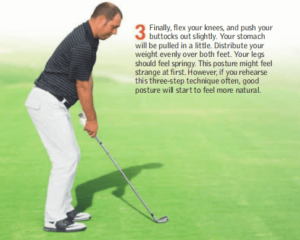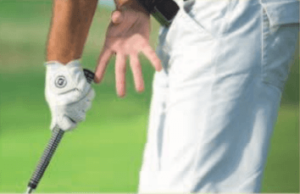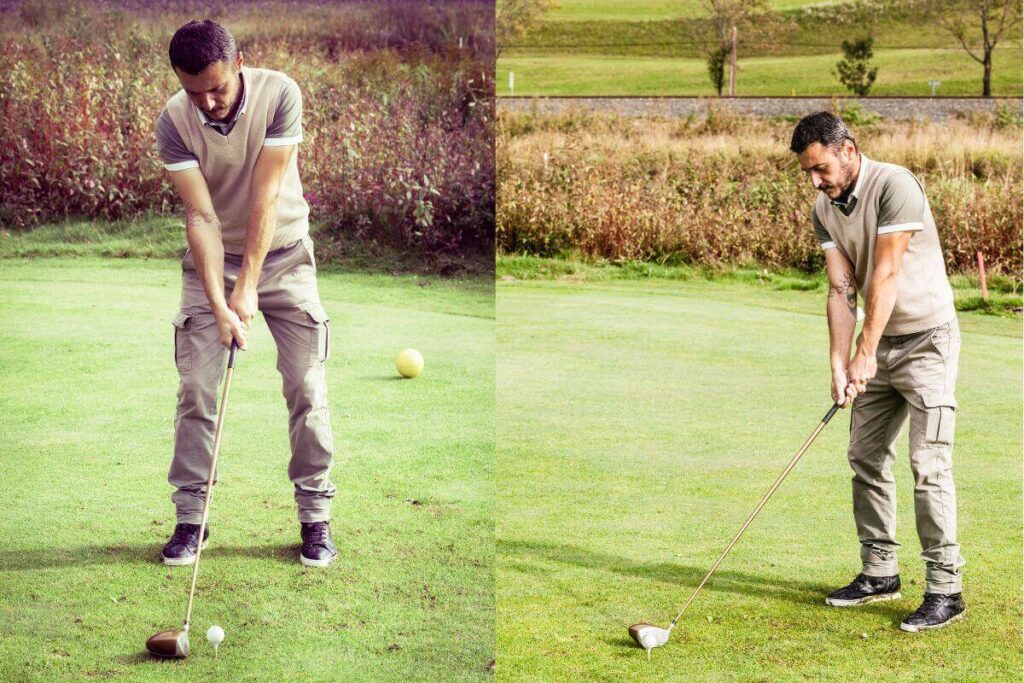Posture describes the angles in your legs and upper body at address and how you distribute your weight in the set-up. The key elements of a good posture are: the amount your upper body bends over from the waist; the amount of flex in your knees; and the distribution of your weight on each foot. Together, these factors influence the shape of your swing.
Step#1
Grip a 5-iron normally, and spread your feet as if you were about to hit a proper shot. Then stand up straight, and with your hands just above the belt-height, extend the club out in front of you.

Step#2
Bend over from your waist. Maintain the angle between your body and your arms. Keep bending until the clubhead rests on the ground.
Step#3
Finally, flex your knees, and push your buttocks out slightly. Your stomach will be pulled in a little. Distribute your weight evenly over both feet. Your legs should feel springy.

This posture might feel strange at first. However, if you rehearse this three-step technique often, good posture will start to feel more natural.
Table of Contents
Weight distribution
In an efficient golf swing, your weight shifts from your back foot in the backswing and to your front foot in the downswing to add power and provide balance. The ideal weight distribution, however, varies with every club. The driver, lofted woods, and long irons work best when you strike the ball with a sweeping blow.
With the middle and short irons, your weight should be evenly spread, since this promotes the descending angle of attack. Unless you are manufacturing a stroke, your weight should not favor your front foot at address.
WOODS AND LONG IRONS
If 60 percent of your weight favors your back foot, you can shift your weight behind the ball at the top of your backswing—crucial for striking the ball with a sweeping blow.
MIDDLE AND SHORT IRONS
For these shorter clubs, try to distribute your weight equally on each foot. This position promotes the correct angle of attack, which is slightly descending.
Long iron on the left, short iron on the right

One Hand-Span Separates Hands From Thighs
If you stand too far or too close to the ball you will struggle to hit it solidly. To avoid this, check how far your hands and the butt-end of the club are from the tops of your thighs—you should see one hand-span of daylight. This suggests that you have enough room to swing your hands and arms freely, but not so much that you are reaching for the ball.

Space to swing
There should be one hand-span between the top of the grip and your thighs.



